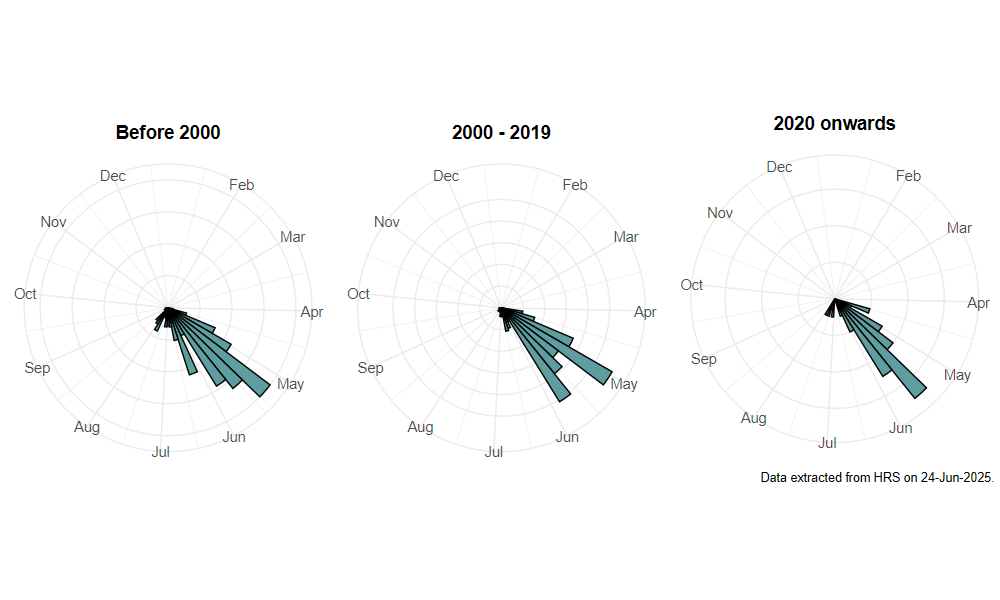Cheilosia antiqua (Meigen, 1822)
Identification
Identification difficulty = 3. ![]()
![]() according to Ball & Morris, 20241
according to Ball & Morris, 20241
Biology
The larva develops in the rootstocks of Primrose Primula vulgaris, where it hollows out cavities in the thickened stem bases. Found in woodland clearings and tracksides and unimproved pastures where the food plants grow. Adults are generally found along woodland rides or edges, and along old hedges, where they fly low-down amongst the vegetation.
Flight period
The following plots show the number of unique records per week excluding those reported to be of immature stages.

Distribution
Widely but thinly distributed across the British Isles with indications of reduced abundance in East Anglia and eastern England. Some records may be erroneous because male Melanogaster hirtella are frequently misidentified as this species. Northern records may also be eronious as this species is readily confused with C. vicina.

Trends
The following plots show the Frescalo TFactor vs year and a map of the rescaled frequency (all records) for the species.
-
Ball, S., & Morris, R. (2024). Hoverflies of Britain and Ireland. WILDGuides (3rd ed.). Oxford: Princeton University Press. ↩